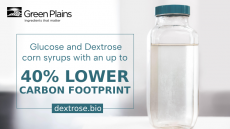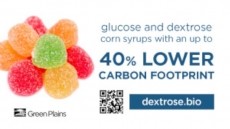Healthy chocolate: EU cocoa flavanol health claim ‘should be revised’, say researchers

The European Food Safety Authority (EFSA)-approved claim – won by Barry Callebaut in 2013 - says dark chocolate, cocoa extracts and cocoa-based beverages with 200 mg of cocoa flavanols contribute to normal blood circulation by helping to maintain the elasticity of blood vessels.
But a study published this month in the journal Phytotherapy Research suggests 100 mg of the specific flavanol epicatechin is required and that 200 mg of total flavanols only contains 46 mg of epicatechin.
Speaking to ConfectioneryNews, Barry Callebaut said the approval of EFSA - an unbiased expert entity - had been granted after a thorough procedure requiring sound scientific evidence.
Epicatechin at 100 mg
The new research by a team at the University of Frieburg, University Hospital of Basel and the University of Bonn claims 100 mg of the flavanol epicatechin has a greater impact on flow-mediated vasodilatation (FMD) than 200 mg of total cocoa flavanols.
It says 200 mg of cocoa flavanols will typically contain 46 mg of epicatechin along with other phenolic compounds such as catechin.
'Cocoa flavanols' has been adopted to describe the collective mixture of flavanols, which includes catechin, epicatechin, leucocyanidin and anthocyanin.
The authors of the latest study say cocoa products with around 100 mg epicatechin can reliably increase FMD, while 900 mg of cocoa flavanols (equivalent to around 256 mg of epicatechin) may decrease blood pressure in specific individuals and/or if consumed over longer periods.
They said EFSA's 200 mg of cocoa flavanols recommendation “should be revised”, particularly as sugar is present in chocolate and numerous factors affect the absorption, metabolism and excretion of the flavanols.
Can the health claim be changed?
Shane Starling, senior editor of our sister publication NutraIngredients has reported on health claims in the EU and beyond for over 15 years. He says: “EFSA has stuck steadfastly to its opinions since issuing its first in 2008 under the NHCR (nutrition and health claims regulation). I can think of two major occasions where it has altered them significantly. One change was due to an administrative oversight in the initial opinion for a weight loss nutrient but the claim was still rejected. Another was due to a reworked submission after an initial rejection in the case of prunes and bowel movement."
Thirteen systemic reviews analyzed
The conclusion comes after the researchers analyzed 13 systemic reviews on cocoa flavanols published since 2010.
The authors suggest earlier studies taken together indicate epicatechin is the key component for improved blood flow, and more specially a dose of 100 mg.
They pointed to a 2013 pilot study by Mogollon et al. that found no impact on flow-mediated vasodilatation (FMD) or blood pressure in pregnant women who consumed 400 mg flavanols per day.
They added a 2015 paper by Hammer et al. found no effect on FMD in patients with peripheral artery disease eating chocolate with 45 mg epicatechin daily.
But a 2015 paper by Grassi et al. found a dose of 500 mg of flavanols with 105 mg epicatechin, improved FMD without a further improvement with a 800 mg dose of cocoa flavanols with 168 mg epicatechin.
“This strengthens the case for a dose of 100 mg of epicatechin in a cocoa product, rather than 200mg flavanols (with 46mg epicatechin) as recently approved by EFSA, to contribute to healthy blood flow,” said the authors.
In a 'Vitafoods Live!' debate on ‘Cocoa flavanol science and the potential for better-for-you chocolate’ hosted by ConfectioneryNews in Switzerland in 2014, Claudio Ferri, director of the School of Internal Medicine, University of L’Aquila, suggested the whole class of flavanols were important, but perhaps epicatechin was key (See Video below).
‘Healthy chocolate’ should declare total flavanol content
The authors of the Phytotherapy Research paper called on chocolate marketed on a health platform to list the total flavanol content and the amount of epicatechin.
Typically only the cocoa solids and fat percentages are declared on chocolate products, they said.
“The content of theobromine should be recorded, although we do not yet know its contribution to the beneficial health effects of chocolate,” the authors continued.
Is chocolate the best delivery vehicle?
The researchers question if chocolate is the best delivery vehicle for cocoa flavanols as so much chocolate would need to be consumed.
Brands hitting the market
Two chocolate confectionery products recently entered the EU market using Barry Callebaut’s health claim: Belgian firm Vandenbulcke's ChoVita and the Good Chocolate Company's brand Lavlé. Barry Callebaut has exclusivity on the health claim until 2018, at which point it is open to the industry.
It said to consume the 900 mg flavanol it recommends would require a mean intake of 300 g chocolate, and the consumption of 100 mg of epicatechin required a mean intake of 125 g chocolate.
“It is not realistic that people would consume such high amounts of dark chocolate every day, but in contrast, some food supplements are an exception and a valuable source for cocoa flavanols including epicatechin," said the study authors.
They added that milk chocolate was “not an appropriate source of flavanols”, while white chocolate conatins no phenolic compounds at all
Researchers from the Mars-backed FLAVIOLA project have previously said chocolate is too calorific to be a delivery vehicle for cocoa flavanols.
Other findings
The paper published this week suggested there was “strong evidence” dark chocolate does not reduce blood pressure.
However, the authors said there was a strong association with increased flow-mediated vasodilatation (FMD or blood flow) and some support for an improvement in blood glucose and lipid metabolism.
The study said polyphenols accounted 18% by weight of dry cocoa beans, while processed dark chocolate contains less than a tenth of this amount (1.7 to 8.4 mg/g polyphenols) and milk chocolate has even less (0.7 to 5 mg/g).
They said the fermentation stage was responsible for the majority of lost flavanols during chocolate production.
Source:
Phytotherapy Research, published online July 1, 2016
DOI: 10.1002/ptr.5665
‘The Impact of Cocoa Flavanols on Cardiovascular Health’
Authors: Julia Vlachojannis, Paul Erne, Benno Zimmermann, and Sigrun Chrubasik-Hausmann



















